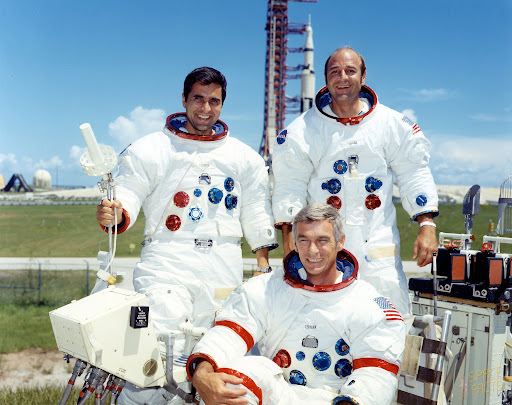Accepting @gwajnberg challenge: "What is your favorite STEM topic and why? What is your curiosity about it and what do you know about it?"
My favourite topic is everything related to space... being it supernovas, black holes, gravastars and so on.I am curious about it because we know so little, we are dust compared to the whole universe and we know almost nothing about it; it is always fashinating to read how those things works. Human attempts to discover what is outside our world are the most interesting, so since we are in December, the month of the last Apollo series missions, I will sum up a bit what happened there.
On December 7, 1972, Apollo 17 took off, mission duration, 12 days 13 hours 51 minutes 59 seconds. Astronauts: Eugene Cernan, Ron Evans, Harrison Schmitt. Apollo 17 was the eleventh and final crewed mission of the American Apollo space program by NASA. The launch of the Saturn V carrier took place at Cape Canaveral on December 7, 1972 at 05:33:00 UTC with Commander Eugene Cernan, Command Module Pilot Ron Evans and Apollo Lunar Module Pilot Harrison Schmitt on board. This is the latest human flight beyond low Earth orbit and the first night launch of the entire program. Schmitt remains the last man to set foot on lunar soil, while Cernan is the last to leave the surface.
The originally scheduled missions of Apollo 18, 19 and 20 were canceled, for both political and economic reasons, even before the launch of Apollo 15. The six Apollo missions with a total of twelve American astronauts who had left their tracks and footprints on the lunar surface were proof that the United States of America had been able to overcome the supremacy of the Soviet Union, which had long been ahead in space exploration.
Evans remains in orbit over America, Cernan and Harrison land with the Challenger in the Mare Serenitatis, not far from the Littrow crater and Mons Argaeus.
This is the last and most coherent of the Apollo program's expeditions: in 87 hours of EVA, reaching 6.5 km from the LEM, the astronauts collected 670 kg of materials including rare reddish "glass balls" (orange soil ) which probably come from at least 300 km deep. They carry out gravimetric, seismological, thermal, electrical measurements on the lunar microatmosphere, on space dust, carry out core samples and carry out experiments while in orbit, using a radar probe, a laser altimeter, a radimeter, a spectrometer. The LEM, left to fall on the Moon after the departure of Cernan and Harrison, causes an earthquake of a force never before recorded on the Moon, equal to the energy produced by the explosion of 700 kg of TNT. The recording made by the seismograph is immediately sent to Earth. The entire mission lasts 301 hours.




